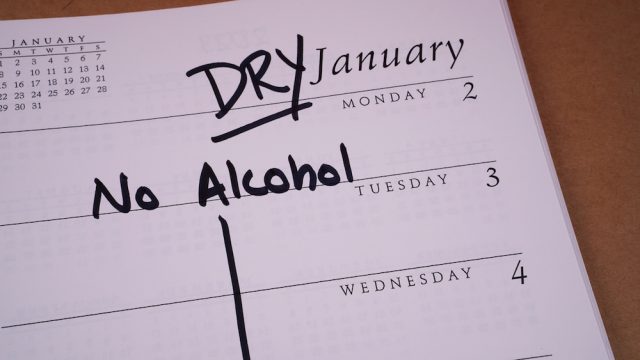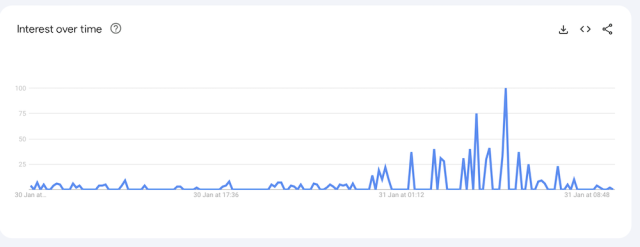This website uses cookies so that we can provide you with the best user experience possible. Cookie information is stored in your browser and performs functions such as recognising you when you return to our website and helping our team to understand which sections of the website you find most interesting and useful.
Why Damp January should replace Dry January
Many are nearing the end of the period of abstinence known as Dry January, but others have taken a fresh approach to drinking which may be better for long-term health, help the alcohol industry, and the on-trade: Damp January. James Evison investigates.

Damp January isn’t a weather forecast. No, this new principle is similar to being a so-called ‘flexitarian’, where you consume meat on some days and go veggie or even vegan on others. It means you drink alcohol occasionally, but not every day, and in moderation and lower ABVs.
This concept comes after millions across the world have partaken in their national equivalents of Dry January, with popular campaigns running both states-side and in Europe especially.
A debate was even sparked this year in France when Emmanuel Macron and the French government did not officially endorse the campaign, leading to a call from health professionals for more public support.
Abstinence
But, for some, the idea of longer-term, mindful drinking seems like a more sensible and healthier move rather than a single month of short-term abstinence, which is then followed by an immediate return to unrelenting, heavy boozing.
There is a fair chunk of scientific evidence behind this approach for a Damp January rather than Dry as well. A study by American scientists last year explained why light-to-moderate alcohol consumption could lower the risk of heart disease.
The researchers, who published their findings in the Journal of the American College of Cardiology, discovered that alcohol in moderate quantities was associated with long-term reductions in stress signalling in the brain.
As a result, the positive impact on stress in the brain appeared to account for the reduction in cardiovascular events in people who are light to moderate drinkers. Previous studies had suggested that one or two drinks per day was associated with a lower risk of cardiovascular disease.
“Pointless”
And the long term benefits of the short spell of non-drinking in Dry January are limited at best. The British Liver Trust went as far as call Dry January “pointless”, and said it was far better to stay off alcohol a few days every week throughout the year, and a longer-term attitude to alcohol is more desirable, the charity told the BBC.
Andrew Langford, chief executive of the British Liver Trust, said: “People think they’re virtuous with their health by embarking on a liver detox each January with the belief that they are cleansing their liver of excess following the festive break.
“A one-hit, one-month attempt to achieve long-term liver health is not the way to approach it.’
Sales
Damp January also follows the consumer trend towards mixing lower alcohol products with higher ABV bottles, as drinkers consider how to spread the units across a given session, week or month.
Low- and no-alcohol producers could well become, and already have began to position themselves as, a key market for Damp January, as those who are ‘dry’ may not be the best segment to market products to, according to research.
This is because very few teetotallers or non-drinkers buy non-alcoholic beverages. A survey by YouGov/The Portman Group discovered of alcohol drinkers to have tried low- and no-alcohol products, 71% have tried one, but only 31% of teetotallers have done so in the UK.
Save pubs
Also, Damp January significant helps the on-trade. This year, pubs, bars and restaurants have seen a 7% decline on 2022 levels, according to CGA data as many take up Dry January.
The British Beer and Pub Association (BBPA) said pubs need to adapt quickly to this consumer shift, and stock more low- and no-alcohol options. But promoting the idea of a mindful, Damp January, could also help.
Chief executive of the BBPA Emma McClarkin reminded consumers that the pub is the “hub in the community, we are the heart of the high street, and we’re the place people can go regardless of whether they’re having an alcoholic beverage or not”.
Switching
Indeed, McClarkin appears right to call out traditional drinking pub-goers as prime candidates for low- and no-alcohol consumption. It isn’t teetotallers who drink such products. According to KAM Media, some 46% of those choosing low or non-alcoholic drinks to order in the on-trade are doing so instead of ordering an alcoholic drink. Only 27%, just over a quarter, chose a low- and no-alcoholic beverage instead of a traditional soft drink.
The numbers are even starker in the US market, where 82% of non-alcoholic drinks are bought by consumers who also buy alcoholic products such as beer, wine or spirits, according research from NielsenIQ.
Only 17% of drinkers across the world abstain from alcohol entirely, which compares to 43% who drink low- or no-alcohol drinks on some occasions and full-strength alcoholic beverages on others.
The Washington Post even suggests an approach to Damp January, which includes drinking on social occasions such as weddings, birthday parties or anniversaries and avoiding boozing apart from that; consuming few drinks in a setting, such as one glass of wine rather than two at dinner; and reducing the number of days you drink.
The future
Whether the trend will take off remains to be seen. Social media posters have already criticised it, but many have already embraced it.
Lol. @BellsBrewery HopSlam for the “Damp January” win! pic.twitter.com/0fvnGnZKdS
— Chicago Bars (@chicagobars) January 24, 2024
Google Trends also suggests that the term is taking off…

But the proof will really be next year to see if the short term trend becomes more commonplace as consumers could realise the “boom and bust” approach to the holiday season is perhaps not the way to go.
Is this the end of Dry January? Only time will tell.

